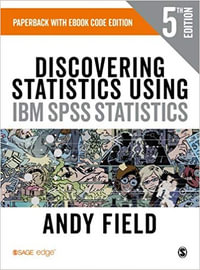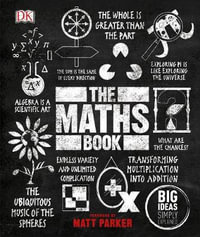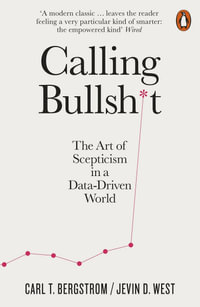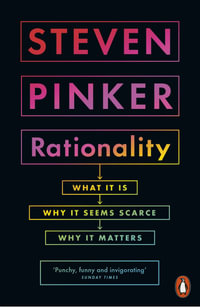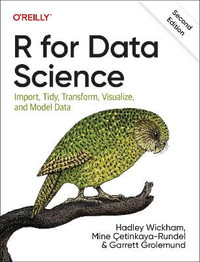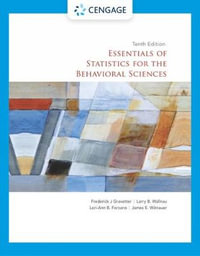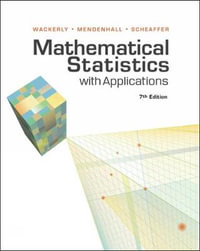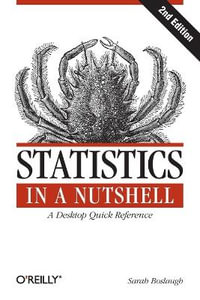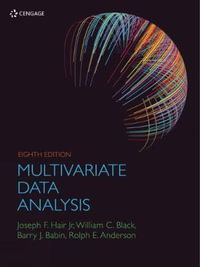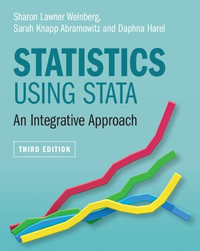| Why probability and statistics? | p. 1 |
| Biometry: iris recognition | p. 1 |
| Killer football | p. 3 |
| Cars and goats: the Monty Hall dilemma | p. 4 |
| The space shuttle Challenger | p. 5 |
| Statistics versus intelligence agencies | p. 7 |
| The speed of light | p. 9 |
| Outcomes, events, and probability | p. 13 |
| Sample spaces | p. 13 |
| Events | p. 14 |
| Probability | p. 16 |
| Products of sample spaces | p. 18 |
| An infinite sample space | p. 19 |
| Solutions to the quick exercises | p. 21 |
| Exercises | p. 21 |
| Conditional probability and independence | p. 25 |
| Conditional probability | p. 25 |
| The multiplication rule | p. 27 |
| The law of total probability and Bayes' rule | p. 30 |
| Independence | p. 32 |
| Solutions to the quick exercises | p. 35 |
| Exercises | p. 37 |
| Discrete random variables | p. 41 |
| Random variables | p. 41 |
| The probability distribution of a discrete random variable | p. 43 |
| The Bernoulli and binomial distributions | p. 45 |
| The geometric distribution | p. 48 |
| Solutions to the quick exercises | p. 50 |
| Exercises | p. 51 |
| Continuous random variables | p. 57 |
| Probability density functions | p. 57 |
| The uniform distribution | p. 60 |
| The exponential distribution | p. 61 |
| The Pareto distribution | p. 63 |
| The normal distribution | p. 64 |
| Quantiles | p. 65 |
| Solutions to the quick exercises | p. 67 |
| Exercises | p. 68 |
| Simulation | p. 71 |
| What is simulation? | p. 71 |
| Generating realizations of random variables | p. 72 |
| Comparing two jury rules | p. 75 |
| The single-server queue | p. 80 |
| Solutions to the quick exercises | p. 84 |
| Exercises | p. 85 |
| Expectation and variance | p. 89 |
| Expected values | p. 89 |
| Three examples | p. 93 |
| The change-of-variable formula | p. 94 |
| Variance | p. 96 |
| Solutions to the quick exercises | p. 99 |
| Exercises | p. 99 |
| Computations with random variables | p. 103 |
| Transforming discrete random variables | p. 103 |
| Transforming continuous random variables | p. 104 |
| Jensen's inequality | p. 106 |
| Extremes | p. 108 |
| Solutions to the quick exercises | p. 110 |
| Exercises | p. 111 |
| Joint distributions and independence | p. 115 |
| Joint distributions of discrete random variables | p. 115 |
| Joint distributions of continuous random variables | p. 118 |
| More than two random variables | p. 122 |
| Independent random variables | p. 124 |
| Propagation of independence | p. 125 |
| Solutions to the quick exercises | p. 126 |
| Exercises | p. 127 |
| Covariance and correlation | p. 135 |
| Expectation and joint distributions | p. 135 |
| Covariance | p. 138 |
| The correlation coefficient | p. 141 |
| Solutions to the quick exercises | p. 143 |
| Exercises | p. 144 |
| More computations with more random variables | p. 151 |
| Sums of discrete random variables | p. 151 |
| Sums of continuous random variables | p. 154 |
| Product and quotient of two random variables | p. 159 |
| Solutions to the quick exercises | p. 162 |
| Exercises | p. 163 |
| The Poisson process | p. 167 |
| Random points | p. 167 |
| Taking a closer look at random arrivals | p. 168 |
| The one-dimensional Poisson process | p. 171 |
| Higher-dimensional Poisson processes | p. 173 |
| Solutions to the quick exercises | p. 176 |
| Exercises | p. 176 |
| The law of large numbers | p. 181 |
| Averages vary less | p. 181 |
| Chebyshev's inequality | p. 183 |
| The law of large numbers | p. 185 |
| Consequences of the law of large numbers | p. 188 |
| Solutions to the quick exercises | p. 191 |
| Exercises | p. 191 |
| The central limit theorem | p. 195 |
| Standardizing averages | p. 195 |
| Applications of the central limit theorem | p. 199 |
| Solutions to the quick exercises | p. 202 |
| Exercises | p. 203 |
| Exploratory data analysis: graphical summaries | p. 207 |
| Example: the Old Faithful data | p. 207 |
| Histograms | p. 209 |
| Kernel density estimates | p. 212 |
| The empirical distribution function | p. 219 |
| Scatterplot | p. 221 |
| Solutions to the quick exercises | p. 225 |
| Exercises | p. 226 |
| Exploratory data analysis: numerical summaries | p. 231 |
| The center of a dataset | p. 231 |
| The amount of variability of a dataset | p. 233 |
| Empirical quantiles, quartiles, and the IQR | p. 234 |
| The box-and-whisker plot | p. 236 |
| Solutions to the quick exercises | p. 238 |
| Exercises | p. 240 |
| Basic statistical models | p. 245 |
| Random samples and statistical models | p. 245 |
| Distribution features and sample statistics | p. 248 |
| Estimating features of the "true" distribution | p. 253 |
| The linear regression model | p. 256 |
| Solutions to the quick exercises | p. 259 |
| Exercises | p. 259 |
| The bootstrap | p. 269 |
| The bootstrap principle | p. 269 |
| The empirical bootstrap | p. 272 |
| The parametric bootstrap | p. 276 |
| Solutions to the quick exercises | p. 279 |
| Exercises | p. 280 |
| Unbiased estimators | p. 285 |
| Estimators | p. 285 |
| Investigating the behavior of an estimator | p. 287 |
| The sampling distribution and unbiasedness | p. 288 |
| Unbiased estimators for expectation and variance | p. 292 |
| Solutions to the quick exercises | p. 294 |
| Exercises | p. 294 |
| Efficiency and mean squared error | p. 299 |
| Estimating the number of German tanks | p. 299 |
| Variance of an estimator | p. 302 |
| Mean squared error | p. 305 |
| Solutions to the quick exercises | p. 307 |
| Exercises | p. 307 |
| Maximum likelihood | p. 313 |
| Why a general principle? | p. 313 |
| The maximum likelihood principle | p. 314 |
| Likelihood and loglikelihood | p. 316 |
| Properties of maximum likelihood estimators | p. 321 |
| Solutions to the quick exercises | p. 322 |
| Exercises | p. 323 |
| The method of least squares | p. 329 |
| Least squares estimation and regression | p. 329 |
| Residuals | p. 332 |
| Relation with maximum likelihood | p. 335 |
| Solutions to the quick exercises | p. 336 |
| Exercises | p. 337 |
| Confidence intervals for the mean | p. 341 |
| General principle | p. 341 |
| Normal data | p. 345 |
| Bootstrap confidence intervals | p. 350 |
| Large samples | p. 353 |
| Solutions to the quick exercises | p. 355 |
| Exercises | p. 356 |
| More on confidence intervals | p. 361 |
| The probability of success | p. 361 |
| Is there a general method? | p. 364 |
| One-sided confidence intervals | p. 366 |
| Determining the sample size | p. 367 |
| Solutions to the quick exercises | p. 368 |
| Exercises | p. 369 |
| Testing hypotheses: essentials | p. 373 |
| Null hypothesis and test statistic | p. 373 |
| Tail probabilities | p. 376 |
| Type I and type II errors | p. 377 |
| Solutions to the quick exercises | p. 379 |
| Exercises | p. 380 |
| Testing hypotheses: elaboration | p. 383 |
| Significance level | p. 383 |
| Critical region and critical values | p. 386 |
| Type II error | p. 390 |
| Relation with confidence intervals | p. 392 |
| Solutions to the quick exercises | p. 393 |
| Exercises | p. 394 |
| The t-test | p. 399 |
| Monitoring the production of ball bearings | p. 399 |
| The one-sample t-test | p. 401 |
| The t-test in a regression setting | p. 405 |
| Solutions to the quick exercises | p. 409 |
| Exercises | p. 410 |
| Comparing two samples | p. 415 |
| Is dry drilling faster than wet drilling? | p. 415 |
| Two samples with equal variances | p. 416 |
| Two samples with unequal variances | p. 419 |
| Large samples | p. 422 |
| Solutions to the quick exercises | p. 424 |
| Exercises | p. 424 |
| Summary of distributions | p. 429 |
| Tables of the normal and t-distributions | p. 431 |
| Answers to selected exercises | p. 435 |
| Full solutions to selected exercises | p. 445 |
| References | p. 475 |
| List of symbols | p. 477 |
| Index | p. 479 |
| Table of Contents provided by Ingram. All Rights Reserved. |





